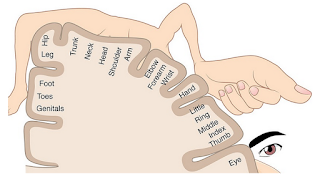Marginal Gains Applied to Iai
Have you ever noticed that when you address one issue in your Iai performance other parts seem to suffer? One’s ochiburui isn’t quite right, you take your senior’s advice and knock it into shape and then your noto becomes jerky and imprecise. You keep your back foot absolutely straight in relation to the axis of the kata and you start bending your leg at the knee when you’re supposed to keep it straight. I make the analogy of putting up a tent: You pull on one guide rope to straighten up the canvas and then it lurches to one side so you have to tighten the opposite rope and it leans in another unexpected direction due to the vector of forces being applied. It becomes a never-ending cycle of adjust this and that goes out. Adjust that and this needs reigning in. Most of us accept this cycle of ‘adjust, deviate, readjust’ throughout our Iai careers and hope the deviation from the ideal of our performance is minimal when we go for a promotion grading. What’s going on?
If you look closely, you may notice that the area that goes array when you’re attending to one aspect of your kata is usually at a distal part your body! An issue with one’s wrist position and your toes turn out. Push your head back to the vertical and you lean forward and stick your hips back and so forth. We all do it, much to the frustration of those of those who teach us. An Iai teacher recently said to me, much to my amusement, “Why do I keep coming back and correcting the same issues in the same people year-on-year-on-year...?”
The issue may be down to the way we allocate our attention. From a previous post, you will know that that multitasking is an illusion and in fact we are switching our singular attention rapidly between salient stimuli in the external and internal environment. When we pay attention to a correct hand motion, we momentarily lose the monitoring of ,say, the leg or foot and it’s motion may drift from the narrow, permitted pattern required of Iai. Indeed, the lay out of the representation of the body on the somatosensory and motor cortex might mean distantly represented body parts are slower to switch between.
This motor homunculus shows parts of the body next to the are of the motor cortex of the brain that controls that body part. The larger the body part, the greater amount of cortex if required to control it and more the precise the control.
As we become more practised in the switching of our attention, it becomes more efficient and quicker and we can monitor and correct aberrations with greater accuracy and we become more expert in keeping ‘everything in line’. This is, naturally on top of all our other motor learning patterns, pushing us toward perfection. But it’s a long process and the ‘learning/adaptation’ curve becomes shallower with time meaning our progress, frustratingly, slows. Oh to be a beginner and make rapid, obvious progress.
Steepening the Curve Again – Marginal Gains
You may have heard of the term ‘marginal gains’ as used by various competitive cycling teams. The term refers to making many, seemingly insignificantly small, improvements which summate to produce an overall large improvement in performance. Small improvements are usually the only way ahead when a practitioner is very experienced so the aim is to make many small improvements in the hope they will summate with positive effects.
Iai Application
Rather than looking for major faults, which you are unlikely to have as an experienced practitioner, try instead to make many incremental and achievable changes. The thought process may be something like this:
“I’ve noticed, in video recordings of myself, that I don’t ‘finish’ the various techniques in a kata. I hurry the first cut which bumps into the second, my chiburui is rushed as a consequence and the whole kata looks hurried and lacks space. How may this be remedied? (a) I could add a short-duration ‘kime’ pause to the end of the first technique but this could destroy the fluidity of the kata, making it too staccato, if applied too judiciously. Why am I hurrying and destroying the discrete but continuous image of the kata? (b) Is it the overall distribution of the timing of my kata? (c) Maybe the Jo Ha Kyu development of the kata needs spreading out and applied to the kata as a whole as well as the individual components therein.”
Thus:-
(a) Add kime to each technique to add some ‘digital’ flavour.
(b) Redistribute the timing to the whole kata giving an elongated envelope to the overall performance.
(c) Use the idea of jo ha and kyu to the individual movements within an overarching jo ha kyu of the whole kata.
The result is an overall continuously analogue performance punctuated with sharp and distinct, digital techniques.
Each of these marginal gains,
combine to produces an overall ideal to which we all aspire. Have a go next time you're struggling to make headway in you performance.



Comments
Post a Comment